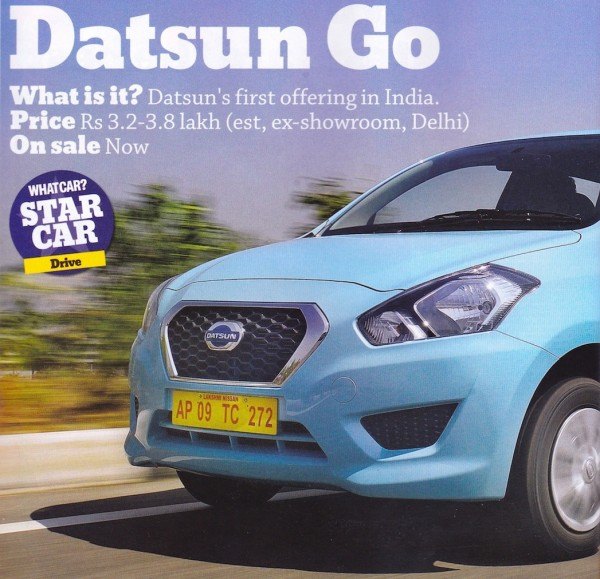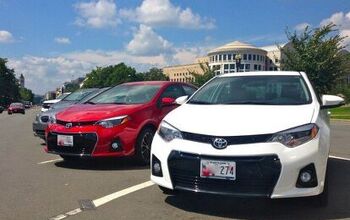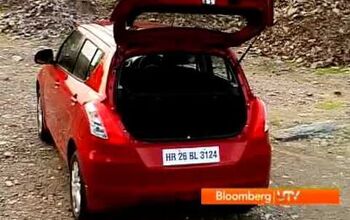Best Selling Cars Around The Globe: Understanding The Indian Car Market
A recent stay in India has enabled me to get a much better understanding of the Indian new car market and its dynamics which have very unique characteristics. Understanding India is essential in today’s worldwide automotive scene – a lot of the innovation taking place here will soon be applied to other developing markets (like Africa).
1. Why India matters
Ever wondered why so many India-exclusive new cars were unveiled at the Delhi Auto Show in February compared to the relative small size of its new car market (3 million units in 2013 vs. 21.9 million for China)? That’s because on top of the enormous growth potential, making and selling cars in India requires a very different set of skills. And the manufacturers that are getting good at it are taking a decisive advantage into succeeding in tomorrow’s developing markets, where cost-cutting will be the most important factor. Many of the techniques being learned in India will come in handy when developing cars for Africa, which is considered the final frontier for automotive growth.
To be successful in India, cars need a price tag so much lower than in most other markets, that new thinking is needed. An Indian trademarked way of innovating that is adapted to local conditions, constraints and revenue levels. The old way of creating low-cost was to engineer down from more sophisticated products by cutting cost through tried-and-tested platforms and economies of scale. The new way is to engineer up from scratch a product that is far cheaper, with a mix of bare bones elements and the latest tech features. Example: the $100 laptop. This process has been dubbed ‘ frugal engineering‘ (achieving more with fewer resources) by Carlos Ghosn, or ‘bottom-up innovation’.
2. Bottom-up innovation at play
Indian manufacturer Tata was the first to bring bottom-up innovation to the car industry with the Nano, ‘the cheapest car in the world’ at US$1,700 when unveiled in 2009. The Nano turned a lot of carmaking conventions on their head. It uses a modular design that theoretically enables a knowledgeable mechanic to assemble the car in a suitable workshop. It also includes numerous lighter components, from simple door handles and bulbs to the transmission and engine parts, enabling a more energy efficient engine. The Nano is one of the shortest four-passenger cars on the market, yet it allows for ample interior space.
These ‘ultra-low cost’ cars can end up being more user-friendly, if sophisticated. One great example: the new Datsun Go does not have a radio or CD player (even optional), only an auxillary port and a USB charging point, which means you can only listen to music stored on a portable device. On the one hand, not having a radio seems unnecessarily stingy. After all, even Tata kept it optional on the Nano. But nowadays, most music is stored not on physical media like CDs, but on digital devices. The lack of a radio is, arguably, a more user-friendly decision that also saves money.
3. Low cost is premium
Car prices are on a drastically different scale in India: they are not just a little cheaper, but in a different ball game altogether. That’s because salary levels cannot compare with Western countries. A young taxi driver earns around $150 per month which is considered a relatively good revenue. A Taj Mahal entry ticket is INR750 ($12) for tourists but INR20 ($0.35) for locals. And all prices are in line with this, including cars.
This way, models considered low cost in Europe are borderline premium in India. And this is where Renault’s strategy of selling Dacia models under the Renault brand in emerging markets takes its full meaning. Starting at US$15,200, the Renault Duster is not the cheapest SUV/MPV on sale in India, and local magazine What Car? says ‘it doesn’t feel premium enough’ for the price. The Duster failing in the value-for-money equation is something I never thought I would see printed anywhere. But in India it makes sense.
For a better idea of Indian prices, consider this: a Tata Nano starts at US$2,890, the Maruti Alto 800 at $4,740, the Hyundai Eon at $5,400, the Maruti Celerio at $6,280, the Honda Amaze at $8,330 and the Honda City at $12,000 (though the City is considered a more premium, Japanese-made car). A very large proportion of new car sales are happening well below $10,000. As far as models sold across different continents, they typically sell for half the price in India than in France. The Maruti (Suzuki) Swift starts at $8,500 in India vs. $16,100 in France, the Nissan Micra at $8,800 vs. $16,000, VW Polo at $9,500 vs. $17,700 and Ford Ecosport at $12,200 vs. $28,800!
In other words, it is impossible to truly compete in the Indian market without manufacturing locally. If you want to undercut local behemoth Maruti by selling ‘more car for the money’, you have to come up with completely new ways of thinking a car – the Datsun Go being a great example. This price structure becomes relevant on the world scale when you take into account that most African countries have even lower average monthly revenues. Manufacturers that will manage to build and sell an attractive car for this type of money will have all chances to succeed in Africa when it booms, and it will.
4. A hate of used cars
In this context, with a starting price at launch of roughly US$1,700 in 2010, Tata was hoping to sell millions of Nanos in India and even expected it would single-handedly increase the total size of the local new car market by 65%. It didn’t happen. And while this situation has boggled me for a long time, interacting with Indian consumers and exploring local roads with my own eyes has started to bring a few explanations to light.
First and foremost, the long-term view about low-cost cars is that they compete with used cars in the mind (and wallet) of consumers. It’s a little less true now in Europe where Dacia has somewhat shaken off its ‘dirty’ low cost image, but it was the case for the first generation Logan. The thinking was that as long as one could buy a new car for the price of an equivalent used one – but this is not true in India.
For example, a comparo between a brand-new Skoda Superb and a 4-year-old Mercedes E-Class in this month’s issue of What Car? India gave the Superb as winner. The conclusion that they came to isn’t terrible difficult to understand, but their reasoning provides a lot of insight.
“Car buyers in India usually shy away from used cars. The second-hand car market is still a big fat grey area, there is the added scare of buying something that’s been abused. If the Mercedes requires major work, it could become exorbitant. Yes, Skoda has a poor reputation for service and parts are expensive here too. And ‘I drive a Skoda’ doesn’t have the ring of ‘I drive a Mercedes’. Still, our choice here is the Skoda.”
Buying an entry level car in India is more a choice between replacing a motorcycle/scooter or trading up to a new car. The ‘used car’ box is bypassed altogether, as there are still too many unknowns associated with it and the used car market is far from regulated. It has become a bit of a vicious circle with cars depreciating extremely fast.
So why did India not choose to trade up from motorcycle to brand new Nano?
5. Interstate travel in style – What the Indian consumer really wants
In their assessment of the Datsun Go, What Car? India says
“it’s clear that Datsun tried to make it look anything but budget. The Go has a peppy engine, spacious interiors and is easy to drive. It seems like a lot of car for the money.”
An observation that goes against most Western observers that qualify the Go as nothing more than a bland and cheap copy of the Nissan Micra. Not in India. There, it is robust, handy and stylish enough to earn the right to be taken on interstate travels with pride.
And that’s the key. What can an Indian family do with a car that it cannot with a motorcycle? For them, it’s the ability to make long-distance visits to their extended families. The family takes a central role in any Indian person’s life, and only 20% of the entire population of India lives in big cities – stressing the need for interstate travel between smaller towns. Along with cars, the local infrastructure is fast improving – the Delhi-Agra Yamuna Expressway I travelled on was only 2 years old.
To understand the failure of the Tato Nano, you have to take a journey to India’s motorways, where cars like the Go can often be seen blazing along at 150 km/h, despite the official 100 km/h limit. It becomes a little more obvious the Nano is, paradoxically, not cut for India. A What Car? reader asks “Is it safe to drive the Nano at 80-100km/h?” The magazine responds
“the Nano is fundamentally a city car and isn’t designed for high speeds. Driving it close to its maximum speed (105km/h) isn’t advisable. For the same money, it’s best to pick up a slightly used car like a Maruti Alto which feels more secure at highway speeds”.
So the Nano is ‘the cheapest car in the world’, but one cannot get out of the city with it, which limits it to a 2nd or 3rd family car, and Indian families that can afford a 2nd or 3rd car would not be seen dead in a Nano. Not stylish, too frugal, not a ‘real’ car. The loop is looped. The Nano could only attract posh city-dwellers that don’t really need a car and to them it’s not attractive. Now I’m generalising a bit, but you get the idea.
What next?
My stay in India came at an important time in the local car industry: when Nissan, reviving the Datsun brand to make it its entry offering, launched its first ‘ultra low cost’ model, the Datsun Go – but don’t go calling it ultra low cost in India – Carlos Ghosn did not mention the word ‘low-cost’ once when he unveiled the car last year. Initial sales figures will show very quickly whether this adventure has been worth all the ‘bottom-up innovation’ trouble. Datsun has already announced its next two Indian launches: in late 2014, the US$7,500 Go+ MPV will arrive and in 2015 the US$4,990 Redi-Go hatch. If successful, expect Datsun to start launching in Africa very soon, and the start of a fascinating new chapter in the history of world automobile will have been written.
Matt Gasnier is based in Sydney and runs a website called BestSellingCarsBlog, dedicated to counting cars around the globe.
More by Matt Gasnier
Latest Car Reviews
Read moreLatest Product Reviews
Read moreRecent Comments
- Tassos Tim is not that good with colors.The bright "pink" is not pink, but FUCHSIA. Both colors may look good on a woman's sweater, but not on steel panels.
- Tassos While I was a very satisfied owner of a much earlier Accord COupe 5 speed (a 1990 I owned from 1994 to 2016), I don't like the exterior styling of this one so much, in fact the 2017 sedan looks better. Or maybe it sucks in white. The interior of my 1990 was very high quality, this one looks so-so. The 157 k miles were probably easy highway miles. Still, Hondas are not Toyotas, and I remember the same service (like timing belt replacement) back then cost TWICE for an Accord than for a Camry. Add to this that it has the accursed CVT, and it's a no. Not that I am in the market for a cheap econobox anyway.
- 3-On-The-Tree My 2009 C6 corvette in black looks great when it’s all washed and waxed but after driving down my 1.3 mile long dirt road it’s a dust magnet. I like white because dust doesn’t how up easily. Both my current 2021 Tundra and previous 2014 Ford F-150 3.5L Ecobomb are white
- Bd2 Would be sweet on a Telluride.
- Luke42 When will they release a Gladiator 4xe?I don’t care what color it is, but I do care about being able to plug it in.










































Comments
Join the conversation
Cool, thanks, I misunderstood. I stand (or actually, sit) corrected. For more background on all this (and this link is meant just as that, for historical background, not to make a point or to grind an axe), an article from back around 2000, when the Indian rules on used-car imports were made much more strict: http://www.columbia.edu/~ap2231/ET/et19-nov00.htm
This 'Bottom-up innovation' is strategy that corporations are preparing to perform in 'rich western countries'.. After next 'financial-crisis' .. Datsun 'Redi-Go hatch' or II gen. TATA NANO('turbo GTI') will be your next dream-car .. :) .. and belive me Marketing and PR depatments are working on topic right now: how to 'brainwash' people(mostly young-hipsters[virtually-brainwashed anyway:]) to accept, and even to like(via facebook:) this kind of 'global-product-junk' .. .. This ‘global product’ corporate-attitude(‘one world taste’ .. ‘cost-cutting’ mantra) is moto-NWO ..